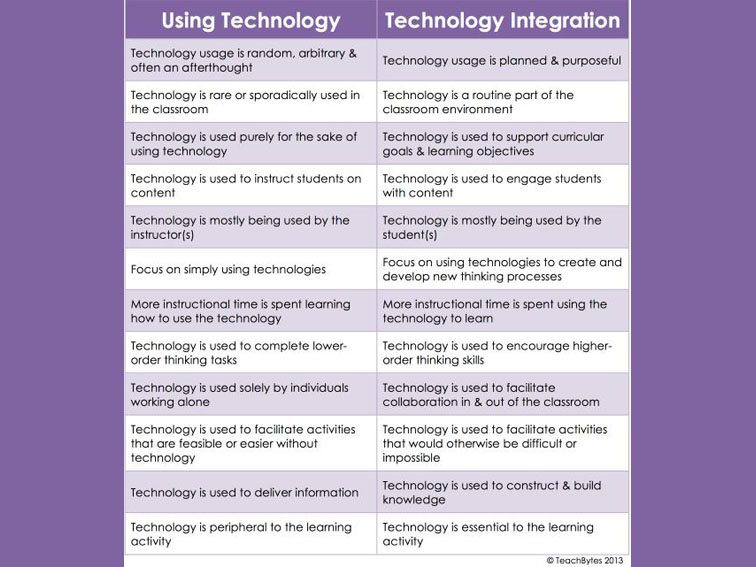
What Is The Difference Between Technology Use And Technology Integration?
by TeachThought Staff
Is technology peripheral to the learning activity or is it essential to its success? Does it deliver information or help students create meaning?
Using technology for learning makes sense. Technology creates access, transparency, and opportunity. Any smartphone or tablet is media incarnate–video, animation, eBooks, essays, blog posts, messages, music, games. The modalities of light, color, and sound are all arranged just to communicate a message or create an experience.
But there is a difference, claims this graphic from teachbytes (whose website now appears abandoned), between using technology and integrating it deeply into the learning experiences of students. This is, of course, what models like the SAMR model are based on–that idea of using technology to automate versus redefining what’s possible.
See also What Teachers Who Use Technology Believe
This is not a new idea, but what makes this graphic useful is the indicators offered that clarify Dos and Don’ts–kind of like an educator’s Goofus and Gallant.
Goofus gives iPad to students so that they can Google topics for a ‘research paper.‘
Gallant helps students design their own open-ended and collaborative learning experiences, and uses apps like Flipgrid or YouTube to share them with the world.
The chart continues this pattern, but misses the opportunity to make Highlights allusion for nuance:
Technology usage is random, arbitrary, and often an afterthought.
Technology usage is planned and purposeful.
In all seriousness, it’s easy to say to ‘be purposeful.’ It’s another to know what that looks like–which is where all of the indicators as a whole can be useful to you as an educator.
The Difference Between Technology Use And Technology Integration
